Provo, UT Pollen and Allergy Report for Summer 2023
Pollen Allergy Trends in Provo, UT
When is pollen lowest in Provo, UT?

February
Lowest month total PPM
Avg. PPM
When is pollen highest in Provo, UT?

March
Highest month total PPM
Avg. PPM
How does pollen in Provo, UT compare to Utah?
Provo has a higher average PPM than the state of Utah.
Provo yearly avg PPM:
Utah yearly avg PPM:
How does pollen in Provo, UT compare to the USA?
Provo has a lower average PPM than the USA.
Provo yearly avg PPM:
USA yearly avg PPM:
Is pollen worse this year in Provo, UT?
Spring 2023 was worse than spring 2022.
Spring 2023 PPM:
Spring 2022 PPM:
Average PPM in Provo, UT
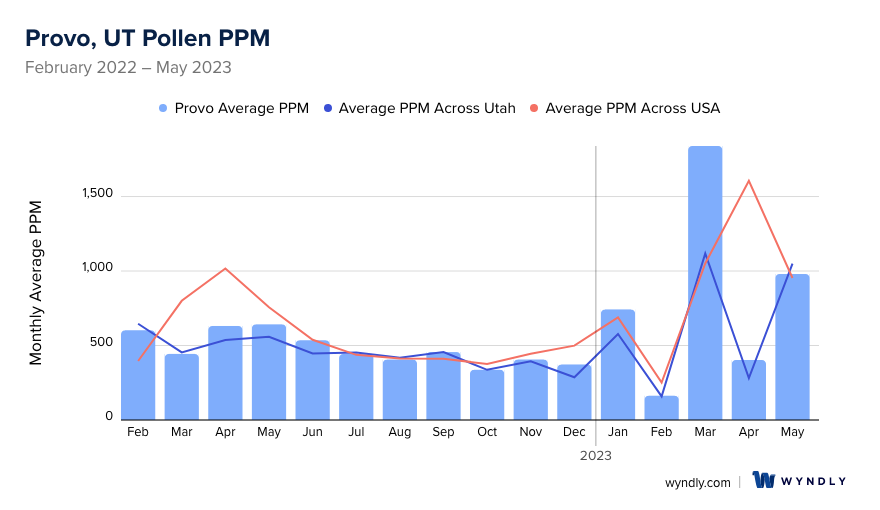
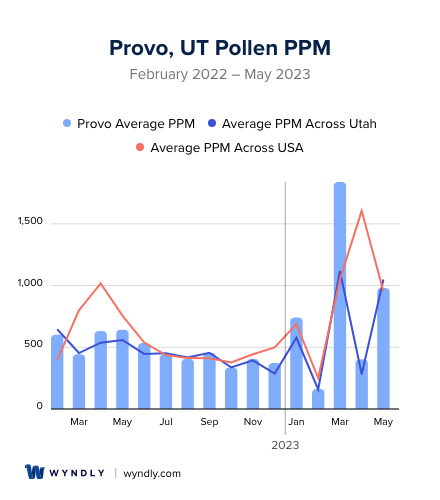
Provo, UT Pollen and Allergy Breakdown by Month
Grass
When is grass pollen highest in Provo, UT?
May has the highest grass pollen in Provo, UT with an average PPM of
When is grass pollen lowest in Provo, UT?
December has the lowest grass pollen in Provo, UT with an average PPM of
Tree
When is tree pollen highest in Provo, UT?
March has the highest tree pollen in Provo, UT with an average PPM of
When is tree pollen lowest in Provo, UT?
August has the lowest tree pollen in Provo, UT with an average PPM of
Weed
When is weed pollen highest in Provo, UT?
September has the highest weed pollen in Provo, UT with an average PPM of
When is weed pollen lowest in Provo, UT?
February has the lowest weed pollen in Provo, UT with an average PPM of
Provo, UT Pollen Monthly Breakdown by Pollen Type
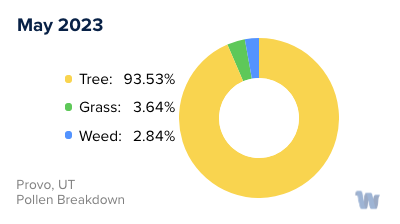
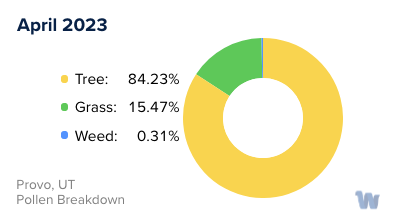
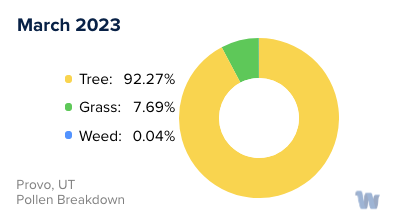
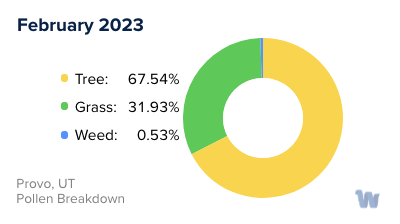
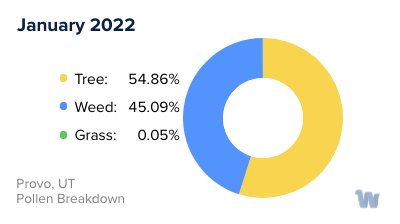
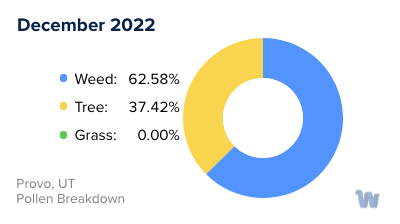
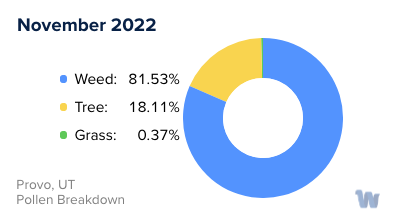
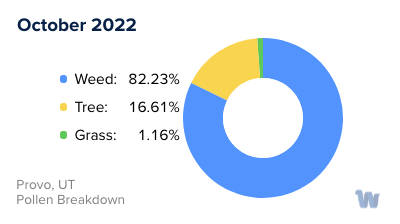
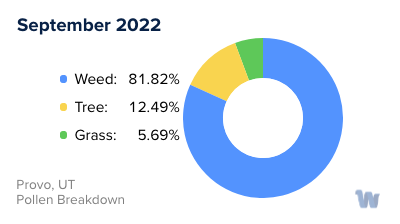
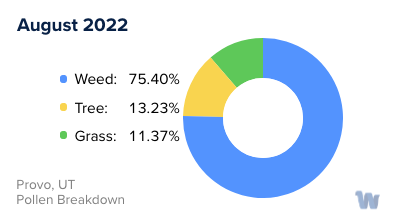
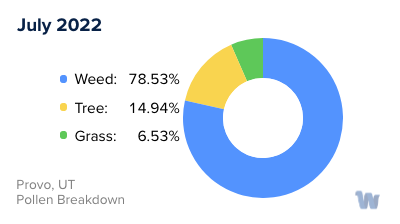
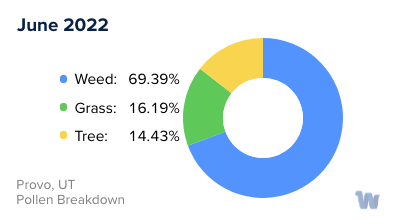
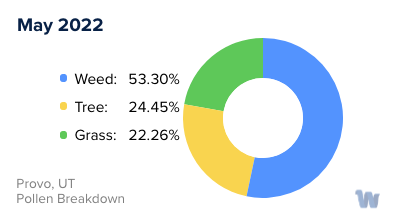
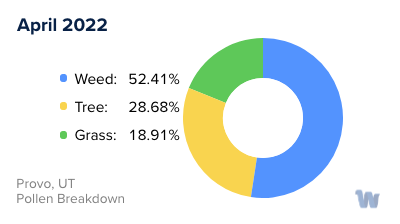
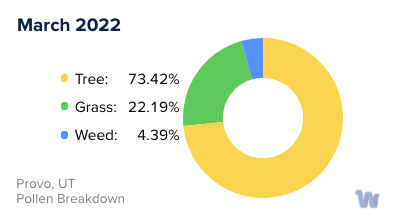
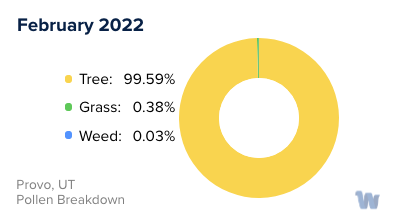
Pollen and Hay Fever in Provo, UT
Pollen allergies, also known as hay fever, are a common concern for residents of Provo, Utah. Pollen, a fine powder released by plants during their reproductive cycle, triggers these allergies. In Utah, pollen originates primarily from grasses, trees, and weeds, each releasing pollen at different times of the year, leading to seasonal allergies.
The allergy season in Provo typically commences in early spring, usually around February. The cold Utah winter gives way to spring, triggering the release of tree pollen and marking the onset of hay fever for many. Common tree pollens include those from maple, birch, poplar, juniper, and mesquite trees.
As we move into summer, the dominant pollen shifts from trees to grasses. Bermuda grass, Timothy grass, wild oat, orchard grass, and Kentucky bluegrass are among the common grasses in Utah that cause pollen allergies during the summer months.
The allergy season peaks in April, May, and September, when the pollen count is at its highest. These high pollen counts can pose a significant challenge to individuals with pollen allergies, potentially leading to flare-ups of symptoms.
By fall, the primary allergenic pollens come from weeds, with ragweed, pigweed, sagebrush, and tumbleweed being common culprits. The allergy season generally concludes with the arrival of the first winter frost, offering a welcome respite to allergy sufferers.
However, it's important to note that despite the seasonal nature of these allergies, individuals can experience symptoms at any time of the year. Indoor allergens, although not directly related to pollen, can continue to cause issues during the winter months.
Remember, the exact timing and severity of pollen allergies can vary from year to year, depending on a variety of factors including weather patterns and individual sensitivity. By understanding the types of pollen and the seasons, individuals can better anticipate and manage their symptoms.

